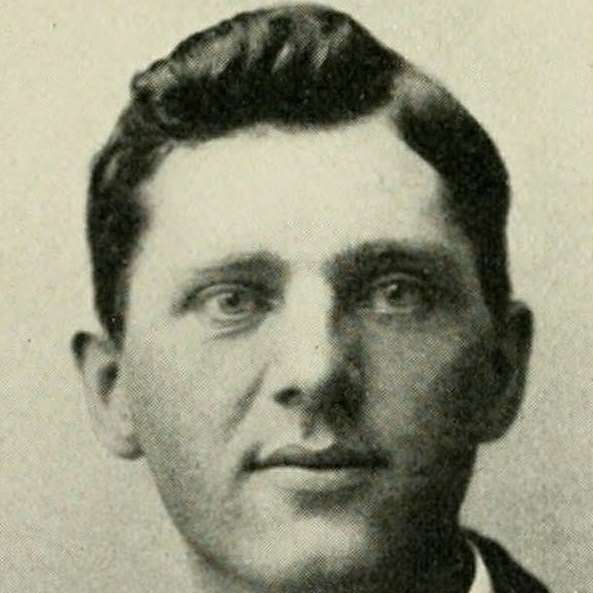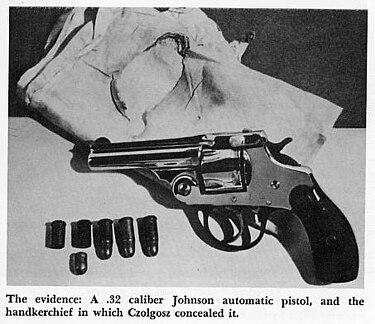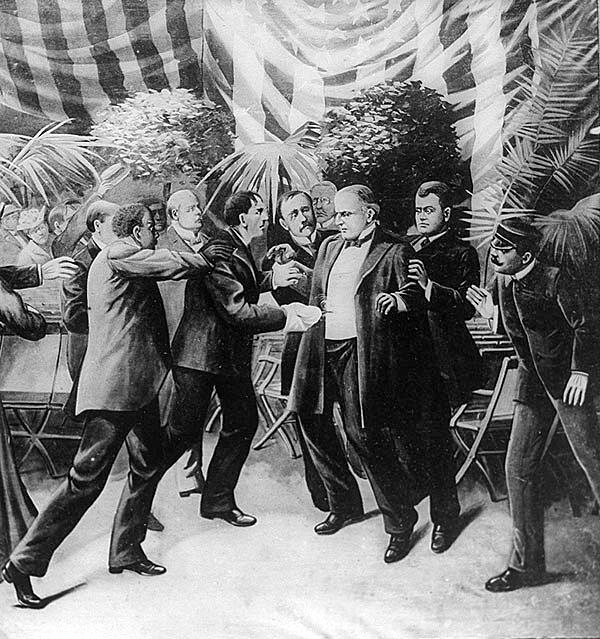
1873 - 1901
Leon Frank Czolgosz
Summary
Name:
Leon Frank CzolgoszYears Active:
1901Birth:
May 05, 1873Status:
ExecutedClass:
MurdererVictims:
1Method:
ShootingDeath:
October 29, 1901Nationality:
USA
1873 - 1901
Leon Frank Czolgosz
Summary: Murderer
Name:
Leon Frank CzolgoszStatus:
ExecutedVictims:
1Method:
ShootingNationality:
USABirth:
May 05, 1873Death:
October 29, 1901Years Active:
1901bio
Leon Frank Czolgosz was born on May 5, 1873, in Detroit, Michigan, into a large Polish-American working-class family. He was the fourth of eight children born to Paul (Paweł) Czolgosz and Mary (Maryanna) Nowak. His mother died in 1883 when Leon was just ten years old, shortly after giving birth to his youngest sister. The family moved often, seeking work and survival in the face of financial hardship, living in locations such as Alpena, Michigan; Natrona, Pennsylvania; and eventually Cleveland, Ohio.
Czolgosz worked in various industrial jobs during his adolescence and early adulthood, including at glass factories and the Cleveland Rolling Mill Company. The economic panic of 1893 and subsequent wage cuts resulted in labor strikes and left Czolgosz disillusioned. He withdrew from the Catholic Church and mainstream society, instead gravitating toward working-class socialist and anarchist ideologies. He first joined the Knights of the Golden Eagle, a fraternal workers’ organization, and later the Sila Club, a more radical group where his interest in anarchist philosophy deepened.
By the late 1890s, Czolgosz became increasingly isolated. After returning to live with his father on a small farm in Warrensville, Ohio, he became reclusive and deeply consumed by the belief that America’s social and political systems were fundamentally corrupt and unjust. In May 1901, he attended a lecture by renowned anarchist Emma Goldman in Cleveland and was reportedly moved by her speech. He introduced himself as “Fred C. Nieman” — meaning “nobody” — and began shadowing known anarchist groups in Cleveland and Chicago.
Despite his interest in their ideas, Czolgosz’s behavior was erratic and secretive. He asked suspicious questions about violence and seemed overly eager to involve himself in conspiratorial discussions. Radical newspapers such as Free Society grew wary of him and issued public warnings to fellow anarchists, suspecting he might be a government spy.
Czolgosz idolized European anarchists who assassinated heads of state, particularly Gaetano Bresci, who had murdered King Umberto I of Italy in 1900. Convinced that American capitalism was sustained by political oppression, Czolgosz increasingly believed that killing President William McKinley would be a revolutionary act on behalf of the working class.
murder story
On August 31, 1901, Leon Czolgosz went to Buffalo, New York, to attend the Pan-American Exposition. He rented a room in a hotel and planned to kill President William McKinley, who was scheduled to speak there. On September 6, Czolgosz concealed a .32-caliber revolver and approached McKinley while the president was greeting the public inside the Temple of Music. At approximately 4:07 p.m., when McKinley reached out to shake his hand, Czolgosz shot him twice in the abdomen at close range.

The first bullet ricocheted off McKinley's coat button and did not penetrate. The second bullet seriously injured McKinley, lodging in his stomach. Although the wound was not instantly fatal, McKinley died eight days later from an infection caused by the bullet wound.
Immediately after the shooting, several people in the crowd tried to attack Czolgosz. One man managed to strike him in the neck and knocked the gun from his hand. Police intervened and took Czolgosz into custody at the local precinct. He was then moved to police headquarters for further processing.

Following McKinley’s death, Czolgosz was arraigned on charges of first-degree murder. A grand jury indicted him on September 16, 1901. During his trial, which began on September 23, Czolgosz did not call any witnesses to defend himself. He claimed to plead guilty, but the judge entered a not guilty plea on his behalf. The trial lasted only a few days, and the jury deliberated for less than half an hour before convicting him.
Czolgosz was sentenced to death and was executed by electric chair on October 29, 1901, just 45 days after McKinley died. His last words indicated he felt no regret for the assassination, stating he killed McKinley because he believed the president was the enemy of the working people. After his execution, his body was subjected to an autopsy, and his remains were disposed of in a way intended to prevent future public display.